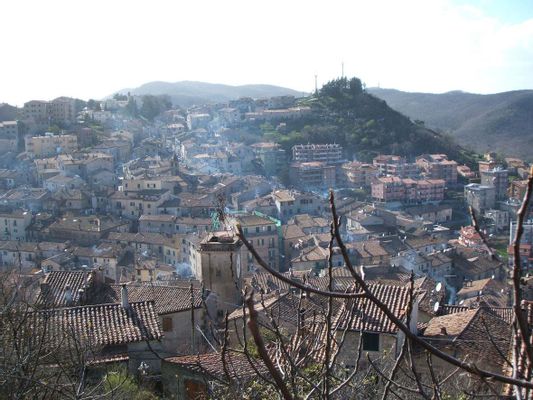Located in central Italy's Lazio region, this medieval town was home to popes from 1257 to 1367. Its UNESCO-listed center and thermal springs draw visitors year-round.
Viterbo sits 80 kilometers north of Rome, where centuries-old stone buildings line narrow streets within 11th-century walls. You can walk through the San Pellegrino quarter's distinctive covered passageways, visit the grand Papal Palace where Pope Alexander IV lived in 1257, or relax in the natural thermal pools at Bullicame. Each September 3rd, hundreds of residents carry a 30-meter illuminated tower through the streets during the Macchina di Santa Rosa festival, while local restaurants serve regional dishes like acquacotta soup throughout the year.
Walking Through Medieval Viterbo
The 11th and 12th-century walls encircle Viterbo's center, with eight preserved gates marking the main entry points. As you walk the cobblestone streets, you'll pass buildings constructed from peperino stone blocks, each measuring 50 centimeters. In the San Pellegrino quarter, stone houses connect through arched passageways, and external staircases called "profferli" climb the facades.
The Papal Legacy
A columned loggia marks the entrance to the Palazzo dei Papi in Piazza San Lorenzo, where eight popes lived during the 13th century. Inside, you can visit the Sala del Conclave, where cardinals gathered to elect new popes. One local account tells how residents removed the palace roof during a particularly long election in 1268, hoping the rain would push cardinals to decide faster. Next door stands the Cathedral of San Lorenzo from the 12th century, its foundation incorporating stones from a Jupiter temple.
Thermal Waters and Wellness
Natural springs bubble up around Viterbo at temperatures between 40°C and 58°C. You can swim in the free public pools at Bagnaccio or spread out on the grass near the Carletti pools. The Bullicame spring, which Dante wrote about in his Inferno, feeds several public baths. For indoor facilities, head to the Terme dei Papi complex with its large pool and steam grotto.
Local Food Culture
Restaurants across Viterbo prepare dishes that reflect centuries of cooking traditions. Try acquacotta, a soup made with local vegetables, eggs, and day-old bread, or lombrichelli, thick pasta rolled by hand. Winter brings warming dishes like chestnut and chickpea soup. During the Santa Rosa festival, many kitchens prepare pignattaccia - tripe and potatoes slow-cooked with wild fennel and mint.
Getting Around
Trains run from Roma Termini to Viterbo Porta Romana station throughout the day, with the journey taking 1 hour 40 minutes. By car, the 104-kilometer drive from Rome typically takes 1 hour 15 minutes via the SS2 highway. Within Viterbo, you can reach all main sites on foot - the walk from the Papal Palace to the thermal baths takes about 20 minutes.





















